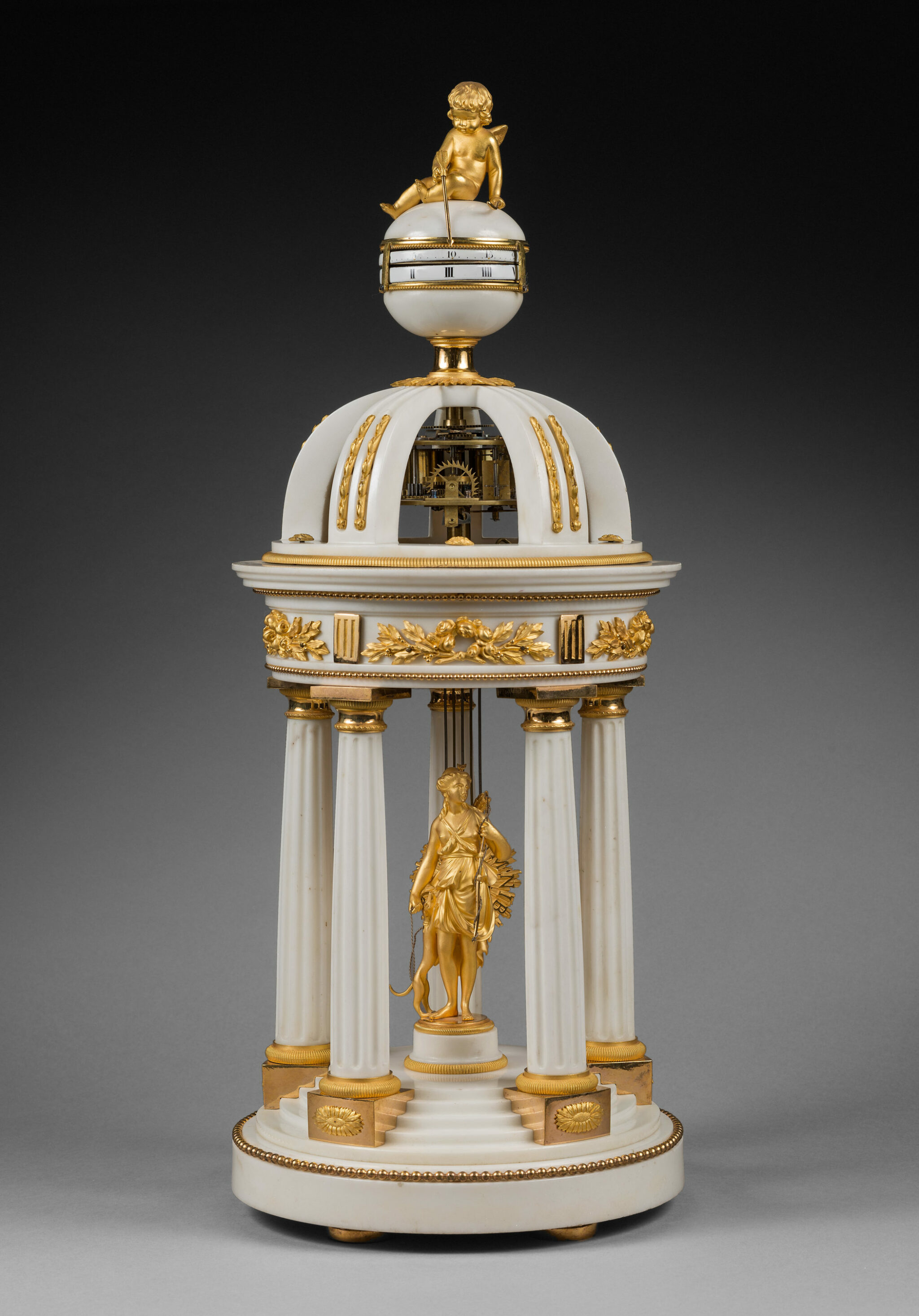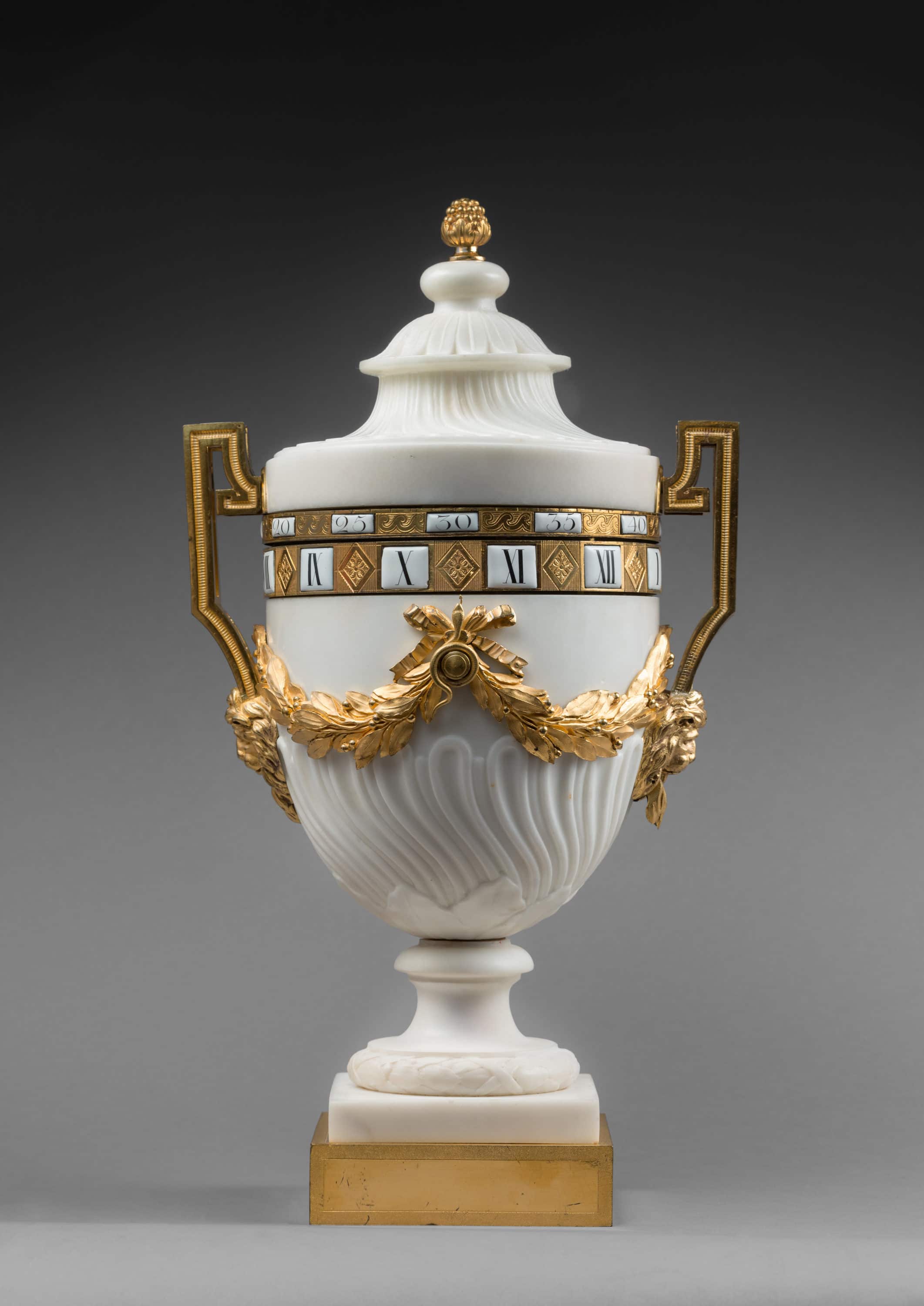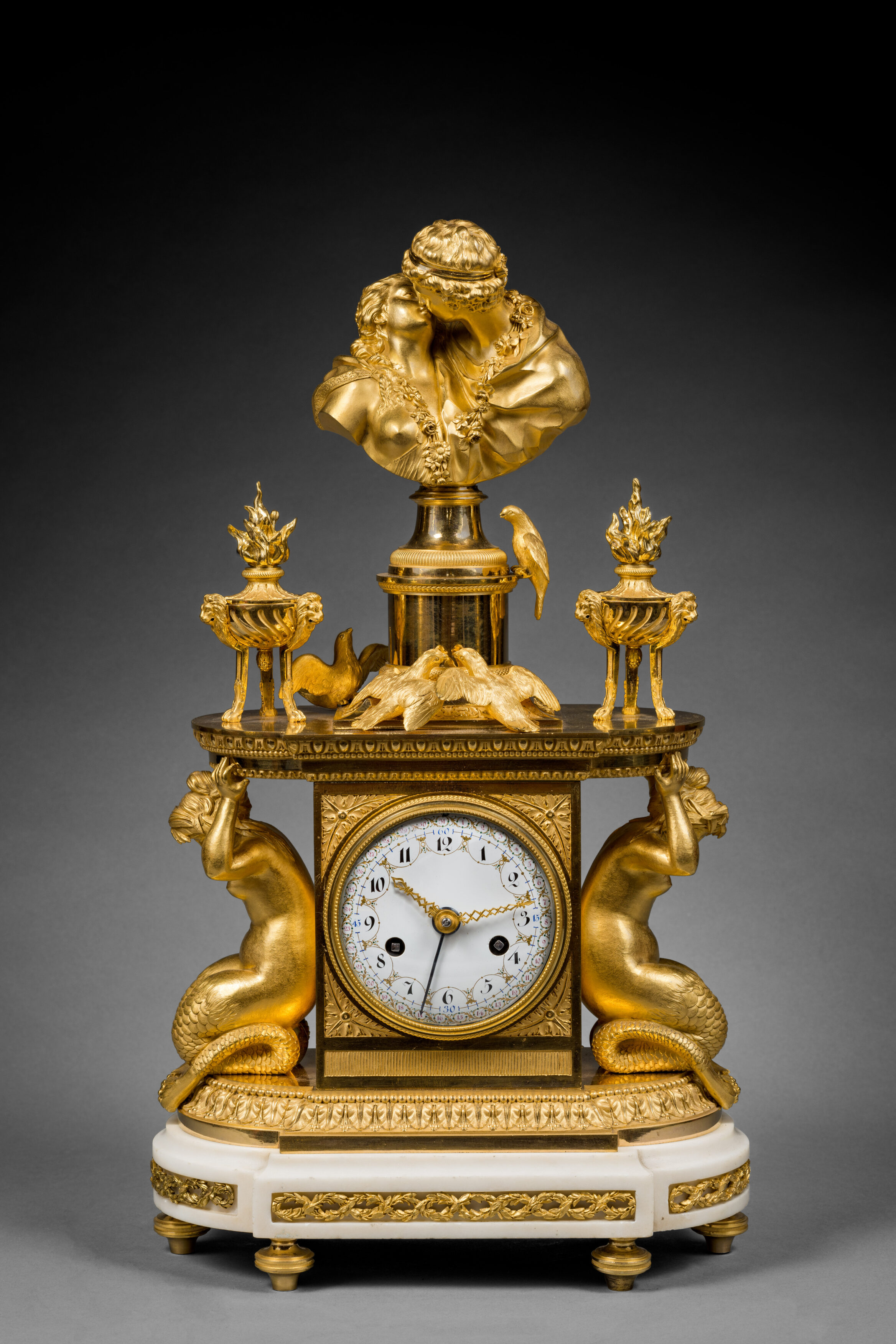White Marble and Gilt Bronze Mantel Clock
“The Temple of Diana”
This clock, modelled as an antique round temple, has an upper portion composed of ormolu-mounted marble arches through which the movement may be viewed. Surmounting the whole, a globe with two revolving enamel ring dials indicates the hours in Roman numerals and the minutes in Arabic numerals; at its summit a winged cupid holds an arrow in his left hand and a bow in his right. The entablature beneath the marble arches is ornamented with alternating triglyphs and sprays of leaves and flowers. The five fluted white marble columns have Doric capitals and quadrangular bases mounted with chased gilt bronze laurel leaf tores and sunflowers. The gilt bronze figure standing in the temple represents Diana the huntress, accompanied by her greyhound. The round stepped base is of white statuary marble.
Discover our entire collection of antique mantel clocks for sale online or at the gallery.
La Pendulerie is the specialist in fine and rare antique clocks, based in Paris.
The clock’s elaborate architectural design derives from the antique Greek and Roman temples, both real and fictitious, such as those that were depicted by Hubert Robert and other artists in the late 18th century. It appears, however, to have been specifically inspired by the Temple de l’Amour, built in 1777-1778 for Marie-Antoinette on the grounds of the Petit Trianon at Versailles, by architect Richard Mique (see Michon’s engraving after a painting by Pierre Courvoisier, illustrated in D. Ledoux-Lebard, Versailles, Le Petit Trianon, Les Editions de l’Amateur, Paris, 1989, p. 31).
Identical, or even comparable clocks, are extremely rare. A clock signed Furet, though it differs in many respects, is based on a similar composition. It is part of the Royal Spanish Collections (illustrated in J. Ramon Colon de Carvajal, Catalogo de Relojes del Patrimonio Nacional, Madrid, 1987, p. 90, catalogue n° 73). Two other known clocks are identical to the present clock: the first, with movement signed Festeau à Paris, is pictured in P. Kjellberg, Encyclopédie de la pendule française du Moyen Age au XXe siècle, Paris, 1997, p. 292, fig. B; the second, with a gilt bronze dome, is signed by the clockmaker Gavelle; it is in the British Royal Collection (see C. Jagger, Royal Clocks, The British Monarchy and its Timekeepers 1300-1900, London, 1983, p. 150).












